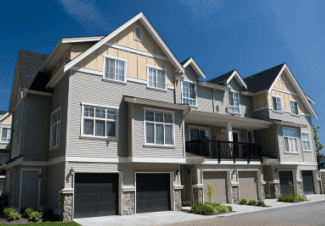 Reducing vacancy rates has always been a top priority for landlords, as nothing kills the bottom line more than vacancies. But with eviction moratoriums looming because of people losing their jobs from COVID-19-related lockdowns, landlords need to reevaluate whether they even want to reduce vacancies. After all, if they can’t evict, what protections do landlords have from tenants who break lease terms? California, for example, is on my radar because of recent discussions to extend eviction moratoriums to January, not 2021, but January 2022.
Reducing vacancy rates has always been a top priority for landlords, as nothing kills the bottom line more than vacancies. But with eviction moratoriums looming because of people losing their jobs from COVID-19-related lockdowns, landlords need to reevaluate whether they even want to reduce vacancies. After all, if they can’t evict, what protections do landlords have from tenants who break lease terms? California, for example, is on my radar because of recent discussions to extend eviction moratoriums to January, not 2021, but January 2022.
So in these unprecedented times, you might wish to first evaluate whether you wish to continue being a landlord in the area you’re currently in: Why put a tenant in your unit if they can stop paying rent and you might not be able to evict them for an entire year? If you live in such a state, you might want to move your business to a locale with laws more favorable to landlords.
That said, here are six ways to reduce vacancy rates in 2021.
1. Offer a longer-term lease
A lease term longer than the standard 12-month lease, such as a two- to five-year lease, is risky for both landlord and tenant. But it could be the answer to help you reduce your vacancy rate. The upside of a longer-term lease is you won’t need to worry about tenant turnover after only a year. But the downsides are being stuck with a tenant you’re unhappy with for a longer period and not being able to increase the rent until the lease term is up. Here are ways to mitigate these risks.
Reduce the risk of a bad tenant
The key to reducing your risk of being stuck with a tenant you’re unhappy with is to conduct a thorough tenant screening process. Besides using a service that performs a credit check and background check, you’ll want to call the prospective tenant’s employer to find out about the applicant’s job security (if the employer will tell you), past landlords, and references.
Not being able to increase the rent
If you don’t like the idea of not getting a yearly rent increase, you could put a clause in the lease stating the rent will increase by a certain percentage after 12 months (or whatever timeline you choose). Such a clause, however, might defeat the attractiveness of the longer term for the tenant, making the strategy backfire. If you have a good tenant in your rental property and can get them to stay longer than a year, it might be worth it to not get the yearly rent increase.
2. Market your property when people are looking
There are cycles to the rental business. It’s generally more difficult to get long-term tenants during the fall and winter than in the spring and summer. Of course, this depends on your area, but that’s the general rule of thumb. So make sure your properties come up for rent when you’re most likely to have the greatest number of applicants.
3. Find out tenant intentions early
To reduce vacancies, it’s good practice to ask your tenants two months before the end of their lease term what their likely intentions are. If they know they’ll move, for example, you can start getting the unit market ready so that you can re-rent immediately. Just make sure you keep the intrusions for any needed repairs and showings to a minimum as a courtesy to your tenants.
4. Include virtual tours in your listings
The coronavirus pandemic made it necessary for landlords to show properties virtually if they wanted to get as many eyeballs on their property as possible. Now that people have become used to conducting an increasing amount of business online, they will come to expect a video tour of your property on your listing in addition to the professional photographs you probably already include.
5. Work with your current tenants
Some of your tenants might be temporarily out of work, particularly now due to COVID-19. They might decide it’s time to move in with a friend or family member to save money.
But you could propose a workaround, such as allowing them to stop paying rent for two or three months and have them make up for it later, presumably once they start working again. Or you could reduce the rent instead of not collecting it at all and either forgive the amount owed or collect it later by increasing rent for the remainder of the year or by deducting it from the security deposit. You could also let them know you won’t be raising their rent when the lease is up.
6. Keep up with maintenance
Just because you have tenants in your rental unit doesn’t mean you can stop maintaining the property. Your tenants will appreciate living in a well-maintained home, making it more likely they’ll stay, and you’ll be keeping up with your investment by performing regular maintenance duties.
The Millionacres bottom line
The coronavirus pandemic certainly did a number on the way we live our daily lives, and probably the biggest hardship outside of getting the virus itself is dealing with lockdowns, which history might prove to have been just as harmful to people’s wallets as the virus was to their health. If you decide that remaining a landlord will be the course to take in 2021, try using some or all of these methods to help ensure your properties stay occupied.
Unfair Advantages: How Real Estate Became a Billionaire Factory
You probably know that real estate has long been the playground for the rich and well connected, and that according to recently published data it’s also been the best performing investment in modern history. And with a set of unfair advantages that are completely unheard of with other investments, it’s no surprise why.
But in 2020 the barriers have come crashing down – and now it’s possible to build REAL wealth through real estate at a fraction of what it used to cost, meaning the unfair advantages are now available to individuals like you.
Source: fool.com
 Reducing vacancy rates has always been a top priority for landlords, as nothing kills the bottom line more than vacancies. But with eviction moratoriums looming because of people losing their jobs from COVID-19-related lockdowns, landlords need to reevaluate whether they even want to reduce vacancies. After all, if they can’t evict, what protections do landlords have from tenants who break lease terms? California, for example, is on my radar because of recent discussions to extend eviction moratoriums to January, not 2021, but January 2022.
Reducing vacancy rates has always been a top priority for landlords, as nothing kills the bottom line more than vacancies. But with eviction moratoriums looming because of people losing their jobs from COVID-19-related lockdowns, landlords need to reevaluate whether they even want to reduce vacancies. After all, if they can’t evict, what protections do landlords have from tenants who break lease terms? California, for example, is on my radar because of recent discussions to extend eviction moratoriums to January, not 2021, but January 2022.














 Accessibility
Accessibility